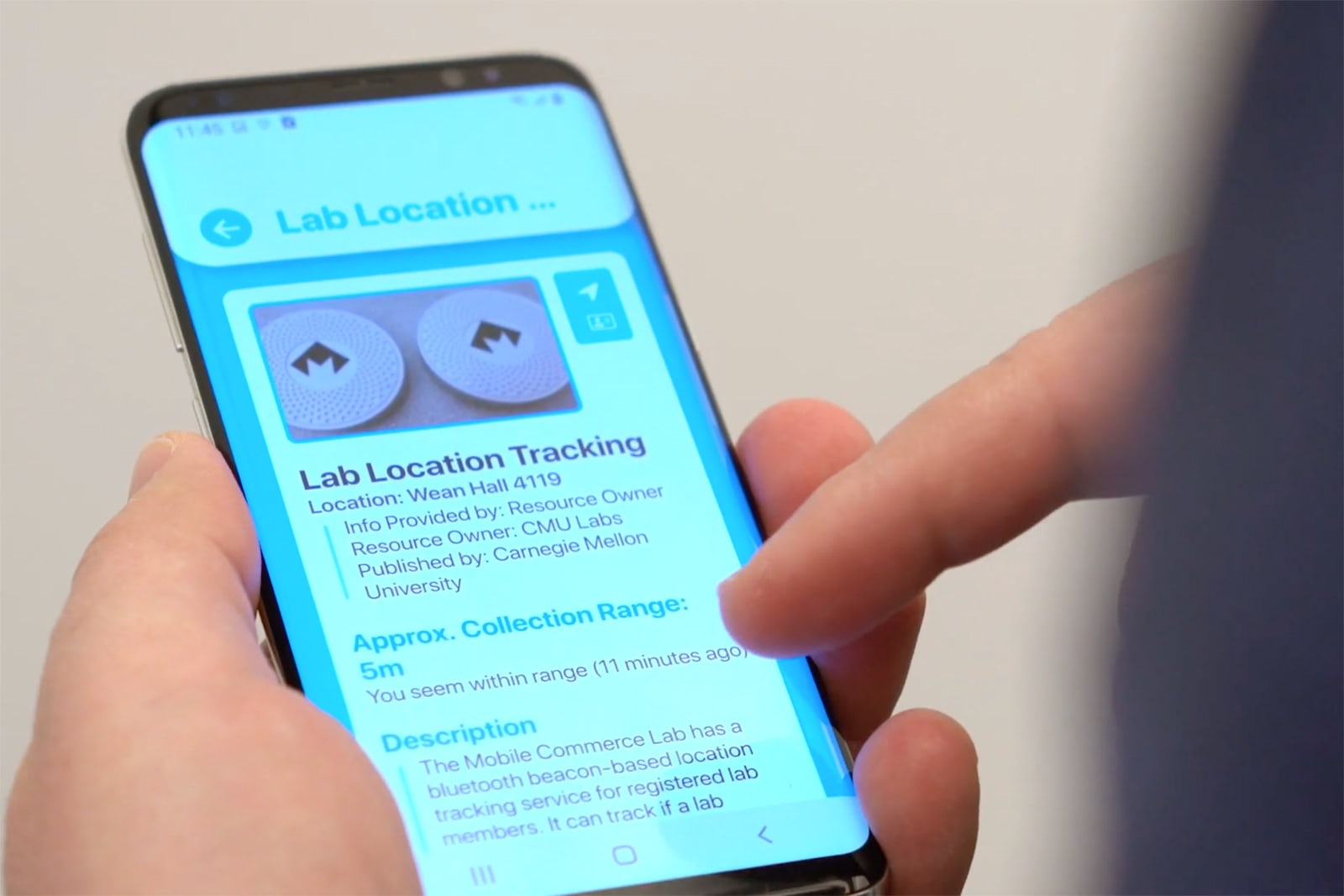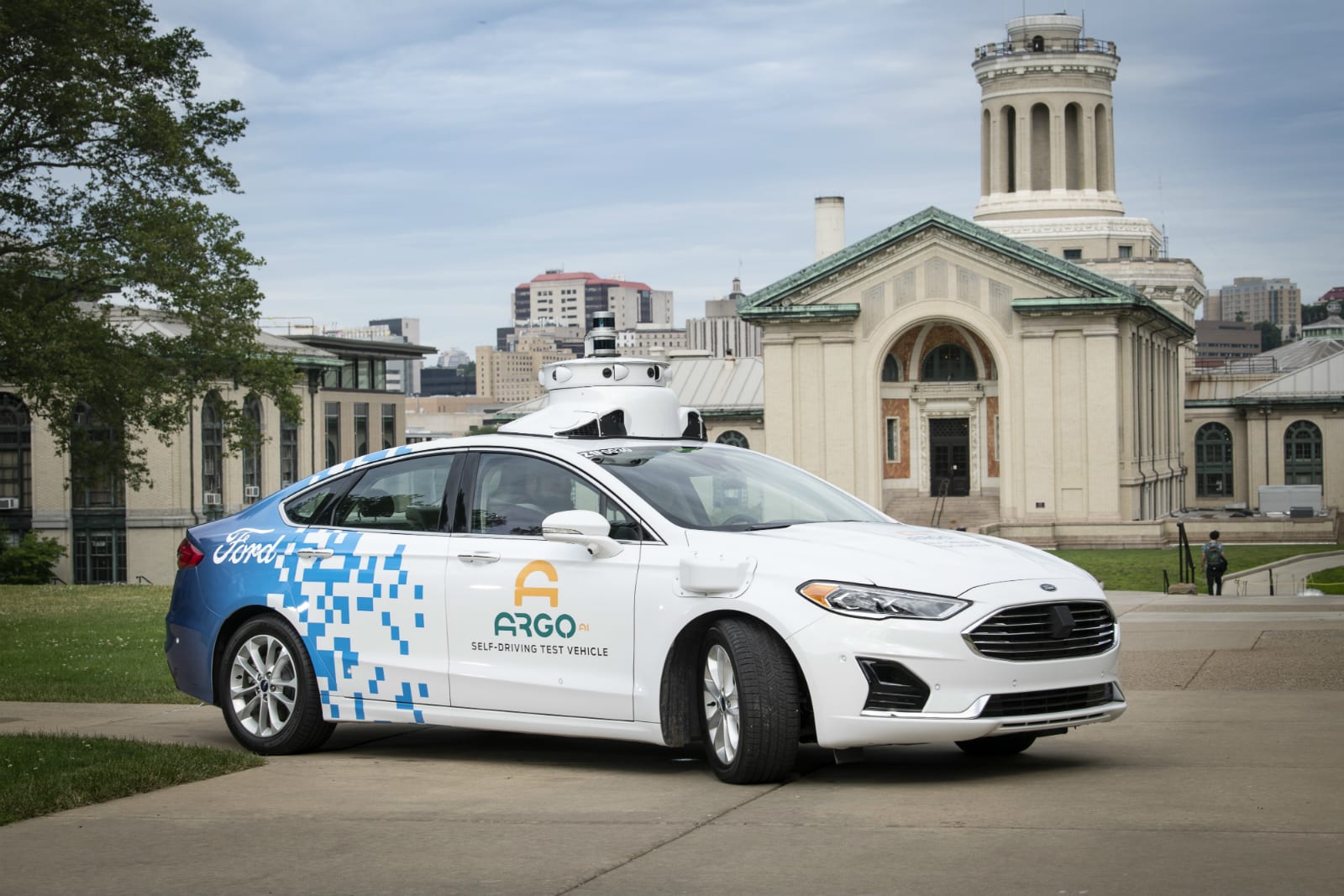Tag Archives: Carnegie Mellon
Carnegie Mellon built an ‘opt-out’ system for nearby tracking devices
 It's getting easier to control what your smart home devices share, but what about the connected devices beyond your home? Researchers at Carnegie Mellon's CyLab think they can give you more control. They've developed an infrastructure and matching...
It's getting easier to control what your smart home devices share, but what about the connected devices beyond your home? Researchers at Carnegie Mellon's CyLab think they can give you more control. They've developed an infrastructure and matching...
Facebook and CMU’s poker AI beat five pros at once
 Facebook and Carnegie Mellon University have built another artificial intelligence bot that beat some top poker pros. While AI bots have been to best professional players in one-on-one competition, Facebook claims it's the first time a bot has been a...
Facebook and Carnegie Mellon University have built another artificial intelligence bot that beat some top poker pros. While AI bots have been to best professional players in one-on-one competition, Facebook claims it's the first time a bot has been a...
Carnegie Mellon will help Ford advance its self-driving vehicle tech
 Ford's autonomous vehicle arm Argo AI is already testing self-driving vehicles in a handful of cities. But the company has a few key puzzles to solve before it can deploy its fleets on a large scale. To help answer the remaining questions -- like how...
Ford's autonomous vehicle arm Argo AI is already testing self-driving vehicles in a handful of cities. But the company has a few key puzzles to solve before it can deploy its fleets on a large scale. To help answer the remaining questions -- like how...
Amazon Alexa Prize Competing Teams include Students from Berkeley, Princeton and Carnegie-Mellon
New Smartwatch Projects Skin Buttons Instead of Using Physical Ones

For some people, letting go of hardware buttons in smartphones and wearables is pretty difficult. The one’s who don’t think touchscreens are that appealing should give laser skin buttons a try.
The problem with wearables is that they really don’t have enough room for physical buttons. Apple claims to have found a solution to displaying images and other things on tiny displays, in the form of the digital crown that enables zooming in and out. Still, maybe people are looking for more functionality in a smartwatch, not just to zoom and scroll. For example, since these wearables are designed to display notifications, among many other things, maybe it would be useful if one button was used for cutting some text, and another one for pasting it somewhere else. Getting one button for each function is not exactly desirable in this day and age, and creating shortcuts by pushing multiple buttons at once would actually defeat the purpose of a variable. What if there was a way to project buttons on the skin, and this way assign their functions depending on the app that’s currently running? That’s pretty much what Carnegie Mellon’s Future Interfaces Group did with the ‘skin buttons‘.
The skin buttons, which are quite thoroughly documented in the accompanying research paper, are currently but a proof of concept. Four micro lasers are used for projecting icon shapes on the skin. It’s possible to display any button with any functionality, supposing that everything is linked to the smartwatch’s software.
If there had been only the four lasers, it wouldn’t have been possible for you to trigger any actions when touching a skin button. However, there also are infrared sensors that can detect when you’re tapping on the skin. The concept used here is very similar to the one that made projected keyboards functional.
There’s plenty of room for improvement, and the researchers who developed skin buttons are well aware of that. The buttons could be assigned various colors, in order to help users differentiate them. On top of that, there’s work to do on the software side of things. I think that skin buttons could become particularly useful for games on smartwatches and other wearables. Now I wonder if any of the tech giants will pick up this idea and implement it in the Android Wear smartwatches.
Be social! Follow Walyou on Facebook and Twitter, and read more related stories about the Wristify personal cooling and heating bracelet, and the TomTom Golfer smartwatch.
Carnegie Mellon’s Chimp robot is reporting for duty, sir
See that guy? He's for real. He's also from Pittsburgh. A team of wizards from Carnegie Mellon University's National Robotics Engineering Center is presently building a new "human-scale" robot in order to compete in DARPA's Robotics Challenge. Part of its charm revolves around the rubberized tracks on its feet as well as on the extremities of each of its four limbs -- not surprisingly, these are engineered to help it maneuver in some pretty sticky situations.
According to the institution, it'll move much link a tank, but it'll also be able to chug along on the treads of just two limbs when needed, such as when it must use one or more limbs to open a valve, or to operate power tools. Oh, and in case you're curious, CMU has affirmed that it'll "be able to perform complex, physically challenging tasks through supervised autonomy," which sounds precisely like the kind of vague description an ill-willed robot would explain to its master before completely taking over his / her life. Just sayin'.
Filed under: Robots
Via: Technabob, Geekosystem
Source: Carnegie Mellon
HERB the Robot Separates Oreo Cookies
The latest contraption to separate the cookies and cream from Oreo cookies is a robot named HERB, Carnegie Mellon’s butler ‘bot. He was built for performing household tasks, and what task could be more important than separating Oreo cookies?

HERB prefers the cream over the cookie, even though he’s a robot. Watch HERB work his magic on some Oreos in the latest Oreo Separator video. The team at Carnegie Mellon had HERB try a few different methods before they found the right way to do it.
At one point he can be seen stabbing the cookies with a kitchen knife. I’m glad that didn’t work – the idea of a robot with a razor sharp knife doesn’t sit well with me. Eventually they settled for the grab and twist method. I love how he pronounces the word Oreo. It sounds a bit like the HAL 9000.
[via Geekosystem]
Visualized: GigaPan circa 2006
GigaPan sure has come a long way in a few short years. Sure, it's no Epic Pro, but this old device marked S/N 15 is a pretty cool piece of history for those who love really hi-res images. We spotted it on the shelf of an office here at Carnegie Mellon, clutching on to an old PowerShot point-and-shoot. According to its owner, the tangled device dates back to around 2006. We knew it looked familiar....
Filed under: Cameras
Visualized: GigaPan circa 2006 originally appeared on Engadget on Fri, 26 Oct 2012 03:00:00 EDT. Please see our terms for use of feeds.
Permalink | | Email this | Comments


